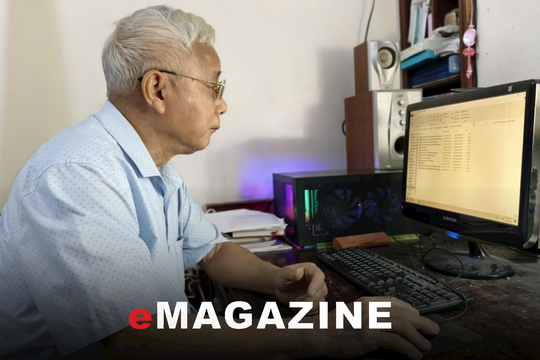How to prevent cervical spondylosis
Modern life with work pressure and speed of movement has caused degenerative diseases of the cervical spine and spine of workers to increase much faster than before.
Reducing exercise time is also a significant cause of spinal degeneration.
Who is susceptible to spondylosis?
People who are related to one or more of the following causes are susceptible to cervical spondylosis: due to genetics, age, unbalanced nutrition, improper exercise...
If the disease is genetic, the patient is often weak from a young age. With increasing age, the aging of body parts increases, including cervical spondylosis. Lifestyle changes have reduced people's exercise time.
The bad consequences of little exercise make the bones soft, the cervical vertebrae lack nutrition leading to early and rapid degeneration. Imbalanced nutrition causes metabolic disorders in the body, especially disorders of calcium, phosphorus and hormone metabolism, making the body susceptible to cervical vertebrae disease.
 |
| Eating shrimp, crab, and fish supplements a lot of calcium to help prevent cervical spondylosis. |
Consequences of cervical spondylosis
Cervical spondylosis causes damage to the nerves, reducing motor function and sensation in the area controlled by the nerves. Severe nerve damage can easily lead to paralysis and even death.
On the other hand, the pain caused by cervical spondylosis affects the patient’s quality of life and work. In addition, this disease also affects other organs such as the cardiovascular system, muscle atrophy, reduced mobility, gastritis, etc.
Due to the stimulation of the spinal cord, the sympathetic nerves of the stomach become excited, causing dysfunction of contraction and relaxation, the stomach and duodenum move in the opposite direction, bile flows back and irritates the gastric mucosa, thereby causing gastritis.
Angina pectoris due to cervical spondylosis: caused by stimulation of the cervical nerve that controls the transverse muscle and the cardiomyocyte (the ectopia cord). The patient has pain in the anterior chest area, and pain when pressing around the cervical vertebrae. The patient may also have difficulty swallowing, high blood pressure, and stroke due to cervical spondylosis.
How to live with cervical spondylosis?
When you have acute pain in the cervical vertebrae, the most important thing is to rest so that the disease will recover quickly. There are two ways to rest: one is to lie down and the other is to rest locally. When lying down, you can protect the injured area to the maximum, avoiding the disease from getting worse due to movement.
Local rest means using a medical device to immobilize the neck and waist to limit the movement of the injured area - the best protection, while the patient can still do some simple movements.
If cervical spondylosis causes nerve compression, you should see a doctor to see if surgery is recommended. If the disease progresses well due to treatment, without symptoms of nerve compression, you can take measures such as: exercise, form a healthy lifestyle to keep the disease in a stable state.
Treatment of cervical spondylosis can be applied surgically or non-surgically. Non-surgical treatments are mainly: stretching, physical therapy, massage, acupuncture, herbal medicine, neck support devices, exercise, etc. After a period of treatment with the above methods, most patients get better or are cured.
Surgical treatment is mainly indicated when the above treatment does not improve the disease or it becomes worse, seriously affecting work and daily life.
Prevent and stop cervical spondylosis
People who work in a sitting position need to stand up frequently to walk around and do some posture changing exercises. You can jog, play badminton, cycle… as long as it is suitable for you. If you are driving and your passengers need to wear seat belts, because the shocks and collisions can cause damage to the cervical vertebrae.
Exercise your neck muscles to strengthen your neck. You can cross your fingers, place them on the back of your neck, try to arch your head and neck back, hold this position for 5-10 seconds, relax and continue, do about 10-15 times.
Exercise the lumbar muscles: lie face down on the bed, use the abdomen as a support, place both arms down along the body, keep both legs straight, stretch, lift both legs as high as possible, this movement has the effect of stretching the cervical vertebrae, thoracic vertebrae and spinal vertebrae to the best state.
Regarding nutrition, it is necessary to supplement calcium by drinking cow's milk, eating meat, shrimp, crab, fish, and supplementing vitamins and minerals by eating lots of vegetables and ripe fruits.
According to SK&DS
| RELATED NEWS |
|---|


.png)


.png)


